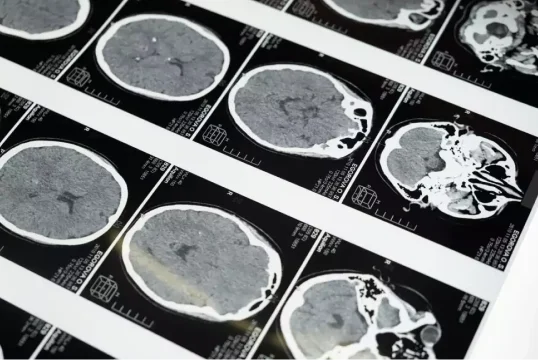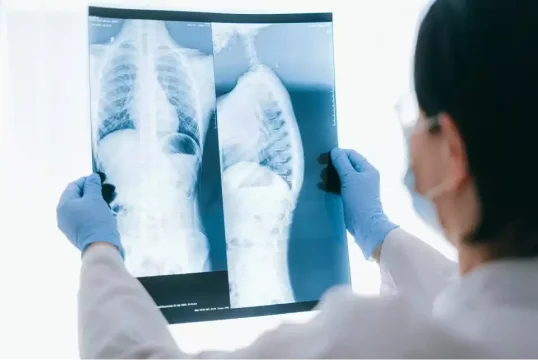Can You Sue for Wrongful Death Due to Medical Malpractice?
Yes, you can sue for wrongful death when it is a result of medical malpractice.
The death of a person in a medical facility is a life-altering experience that impacts the entire family of the deceased. And while medical malpractice and wrongful death may seem interchangeable, there are actually specific factors that differentiate them, especially when it comes to liability.
Medical malpractice can lead to a death that results in a wrongful death suit. Medical malpractice happens when a patient is harmed due to the healthcare provider’s negligence.
A wrongful death is when someone dies as a direct result of negligence, wrongful act, carelessness, or a lack of action. To explain further, our experienced wrongful death attorneys will share key insights and go over the main differences.
What Is Medical Malpractice?
As previously mentioned, medical malpractice occurs when a patient is harmed due to the negligence of a healthcare provider. These can include doctors, nurses, hospital staff, and pharmacists.
A few examples of medical malpractice include:
- Birth injuries
- Surgical errors
- Misdiagnosis
- Failure to diagnose
- Medication mistakes
- Delayed treatment
- Nursing home abuse
- Not taking patient histories too seriously
- Lack of proper follow-up or aftercare
- Incorrectly reading or intentionally ignoring lab results
To legally qualify under medical malpractice, the claim must include:
- Violation of the standard of care. There is a specific medical standard that medical experts must follow. Patients are given the right to expect that their doctors will make medical decisions according to those standards. If the standards have not been reached, then negligence may arise.
- Negligence caused the injury. For a medical malpractice claim to take place, there are two requirements that need to be met:
- The doctors must violate the standard of care.
- The patient must show proof that their injury occurred due to the negligence of the doctors.
Both of these requirements must be met in order for the situation to qualify as medical malpractice. If the victim fails to provide any proof that their injury was caused because of the decisions made by the doctors, there will be no case.
Though there is no real cap on compensatory damages following a personal injury claim, there is one exception and it pertains to medical malpractice. In these cases, the limit for pain and suffering and other non-economic losses is $250,000.
What Is Wrongful Death?
According to California’s wrongful death law, a wrongful death is characterized by, “a cause of action for the death of a person caused by the wrongful act or neglect of another.” As discussed previously, it occurs when a wrongful act by one person directly leads to the death of another.
While medical malpractice addresses cases of medical negligence specifically, a wrongful death can result from many different circumstances, even those unrelated to medical professionals, such as death caused by the following examples:
- Medical malpractice
- Automobile accidents caused by negligence, including DUI
- Drowning
- Slip and falls
- Assault and battery
- Defective medical devices
- Recalled or dangerous vehicles
- Recalled or dangerous food items sold in grocery stores or restaurants
- Nursing home abuse or negligence
- Birth injuries
- Police negligence
- Child abuse and/or neglect
- Pedestrian “knock down” incidents
In most cases, the person who files a wrongful death claim is the closest relative of the person who died and is entitled to bring a wrongful death claim in court. These people can include:
- The decedent’s spouse
- The decedent’s children
- The decedent’s registered domestic partner
- The decedent’s grandchildren, if the decedent’s children are deceased
- Any minors who were at least 50 percent dependent on the deceased for financial support
- Any individual entitled to the decedent’s property, according to California’s intestate succession laws
Moreover, a successful wrongful death case will involve proving:
- The death of an individual
- The negligence or reckless actions of the defendant caused the death
- The surviving family members have suffered financially and emotionally
The plaintiff must provide convincing evidence to the jury that there was a connection between the negligent act and the cause of death. If they are successful in doing so, then the allegations against the defendant would be considered more likely to be true than not true, which will result in the plaintiff recovering damages.
The statute of limitations in California for both a wrongful death claim and a survival action is two years. The clock begins ticking in a wrongful death case on the date of death. When it comes to survival actions, the decedent’s estate has exactly two years to file from the latter of:
- The date of the injury, or
- Six months after death.
However, there are exceptions to the statute of limitations. This is classified as a “discovery rule.” If the cause of a deceased victim’s death was not obvious when they died and was later found out, this could extend the time period for the victim’s family to file a wrongful death lawsuit from the day the negligent act was discovered.
Also, in any case, where the government or one of its employees was at-fault for wrongful death, you are given 6 months to sue them. The case will be dismissed if the family exceeds the given time period.
Available Damages
Accidents unfortunately happen often, as well as those that lead to death. If you were injured as a result of someone else’s negligence or a loved one lost their life because of someone’s negligence, you may be entitled to compensation for your losses.
Economic damages are intended to compensate a plaintiff for losses that a dollar amount can readily be attached to. Economic damages are calculated by determining the amount of out-of-pocket losses an aggrieved individual has or will expect to incur as a result of their injuries. A few examples of economic losses include:
- Loss of Earning Capacity
- Medical Bills
- Lost Wages
Non-economic damages, on the other hand, are essentially intended to cover losses that are thought of as subjective and will not necessarily cover out-of-pocket losses. Non-economic damages may include compensation for:
- Emotional Distress
- Pain and Suffering
- Loss of Enjoyment of Life
Though rarely awarded, there is a third type of damages known as punitive damages. Punitive damages are intended as punishment and are only awarded when a defendant’s behavior is especially harmful. There is no real set standard for calculating and awarding punitive damages. Punitive damages are awarded at the court’s discretion and will vary depending on the specific circumstances of a case.
And how does the court determine compensation amounts for surviving family members? The period of time during which these damages are recoverable is typically:
- The decedent’s life expectancy when the wrongful act took place
- The life expectancy of the plaintiff when the wrongful act took place
When it comes to determining life expectancy, factors such as lifestyle, overall health, and job occupation will all be taken into consideration by the court.
West Coast Trial Lawyers Is Here to Help
Although West Coast Trial Lawyers does not offer legal services for medical malpractice, we do have a network of qualified medical malpractice lawyers we will connect you with for assistance. To get you referred to a medical malpractice lawyer, you may contact us by calling 213-927-3700 or completing our online contact form located on the right side of the page.


































































